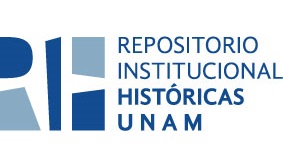Consulte el registro sencillo del ítem
A dónde van los muertos: algunas reflexiones en torno a las relaciones entre vivos y difuntos en diversos tipos de sociedades del mundo
| dc.contributor.author | Martínez González, Roberto |
| dc.coverage.spatial | Europa |
| dc.coverage.temporal | siglo XIX |
| dc.coverage.temporal | siglo XX |
| dc.date.accessioned | 26/10/2020 16:20 |
| dc.date.available | 26/10/2020 16:20 |
| dc.date.issued | 2017-10-03 |
| dc.date.submitted | 31/05/2016 0:00 |
| dc.identifier.issn | 1988-3269 |
| dc.identifier.other | 1135-4712 |
| dc.identifier.uri | http://hdl.handle.net/20.500.12525/592 |
| dc.description.abstract | "Considerando que, según Robert Hertz, la muerte implica un cambio en las relaciones sociales, el presente trabajo se propone indagar sobre los tipos de vínculos que diversas poblaciones del mundo suponen establecer con sus difuntos. Por medio del contraste entre ejemplos procedentes de muy distintas épocas y regiones, se identifican tres estrategias principales que, aunque admiten cierto número de variantes, se caracterizan por la persistencia de una lógica común. Éstas son: el alejamiento, donde se modifican tanto las identidades como las relaciones; el reciclaje, en el que las identidades se mantienen pero las relaciones se transforman, y la retención, que acepta la trasmutación de las identidades pero no así de las relaciones. Una vez descritas las cualidades de cada una, se muestra que, lejos de identificarse algún condicionamiento económico-social, dichas estrategias pueden coexistir como posibilidades en la mentalidad de cada sociedad." |
| dc.description.abstract | "According to Robert Hertz, death means a change in social relations. The purpose of this paper is to inquire about the kind of mediation that different world populations establish with their deaths. We compared examples from different eras and regions, and three main strategies are identified which, even if they admit certain number of variations, can be characterized by the persistence of a common logic. These are: distance, in which identities and relations are modified; recycling, when identities are maintained but relations are transformed; and retention, which accepts the transmutation of identities, but not of relations. Once described the qualities of each one, we show that, far from being able to identify any economic-social conditioning, these strategies can coexist as possibilities in the mind of every society." |
| dc.format | |
| dc.format.extent | 483.8 KB |
| dc.language.iso | spa |
| dc.publisher | Universidad Complutense de Madrid |
| dc.relation | Martínez González, Roberto, “A dónde van los muertos: algunas reflexiones en torno a las relaciones entre vivos y difuntos en diversos tipos de sociedades del mundo”, 'Ilu. Revista de Ciencias de las Religiones, Ediciones Complutense, Madrid, v. 22, 2017, p. 221-244. DOI: https://doi.org/10.5209/ILUR.57414. |
| dc.relation.isformatof | |
| dc.rights.uri | http://creativecommons.org/licenses/by/4.0 |
| dc.source | Ilu. Revista de Ciencias de las Religiones, Ediciones Complutense, Madrid, v. 22, 2017. |
| dc.subject.other | Antropología -- Antropología cultural y social |
| dc.subject.other | Relaciones sociales |
| dc.subject.other | Muerte -- Concepción de la muerte |
| dc.title | A dónde van los muertos: algunas reflexiones en torno a las relaciones entre vivos y difuntos en diversos tipos de sociedades del mundo |
| dc.title.alternative | Where the Deaths Go: Some Reflections about the Relations between Livings and Deaths in Differents Types of Societies around the World |
| dc.type | Artículo |
| dc.rights.holder | Universidad Complutense de Madrid |
| dc.coverage.placeofpublication | Madrid |
| dc.relation.number | s/n |
| dc.subject.keywords | concepción de la muerte |
| dc.subject.keywords | relaciones sociales |
| dc.subject.keywords | antropología comparada |
| dc.subject.keywords | variabilidad cultural |
| dc.subject.keywords | death conception |
| dc.subject.keywords | social relations |
| dc.subject.keywords | compared anthropology |
| dc.subject.keywords | cultural variability |
| dc.type.publicationversion | publishedVersion |
| dc.audience | students |
| dc.audience | researchers |
| dc.audience | teachers |
| dc.rights.access | openAccess |
| dc.relation.alternativeidentifier | https://doi.org/10.5209/ILUR.57414 |
| dc.date.accepted | 27/04/2017 0:00 |
| dc.relation.volume | 22 |
Ficheros en el ítem
Este ítem aparece en la(s) siguiente(s) colección(ones)
Excepto si se señala otra cosa, la licencia del ítem se describe como http://creativecommons.org/licenses/by/4.0




